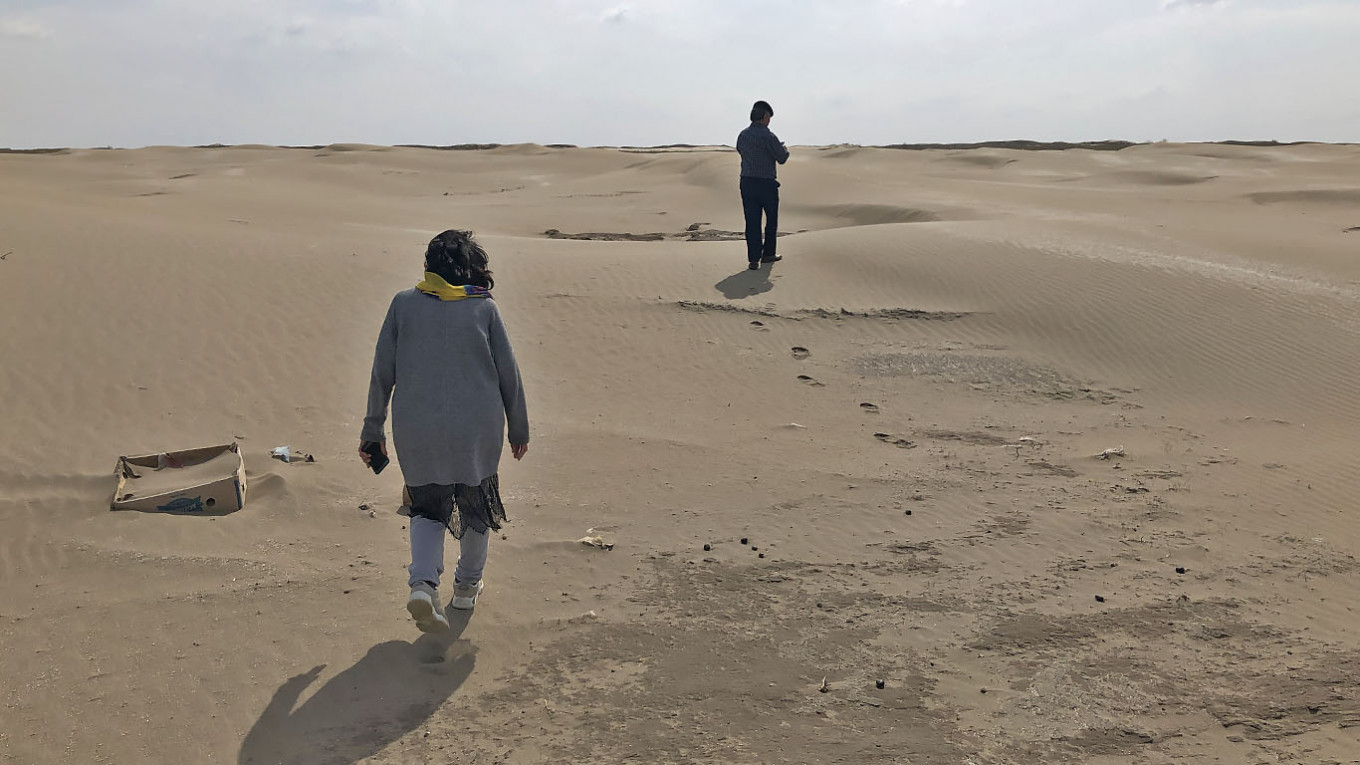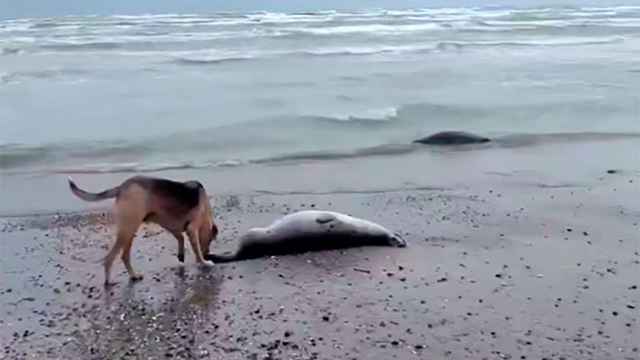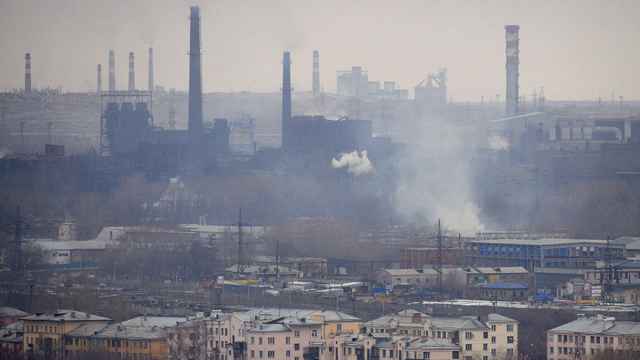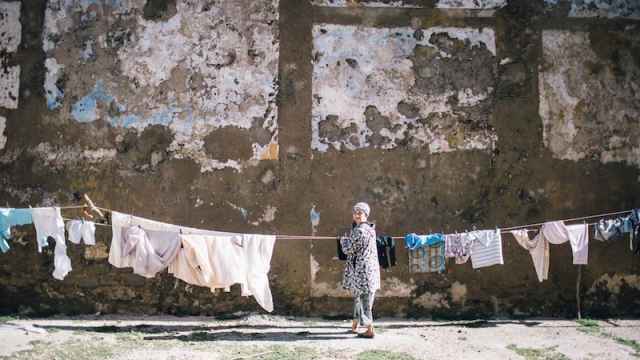TEREKLI-MEKTEB, Dagestan - In the remote north of Russia’s Caucasian Dagestan region, rich grasslands once sustained hordes of humans and animals alike. Now, herds of stray cows roam towering sand dunes in a huge new desert that grows bigger every year.
For 30 years now, climate change has been driving the sands further into the Nogai steppe, gradually transforming the traditional homeland of a people that once dominated much of southern Russia from green and pleasant pasture to barren desert.
“Welcome to our little Sahara,” said Rashid Bakiyev, the 61-year-old deputy head of the local forestry commission.
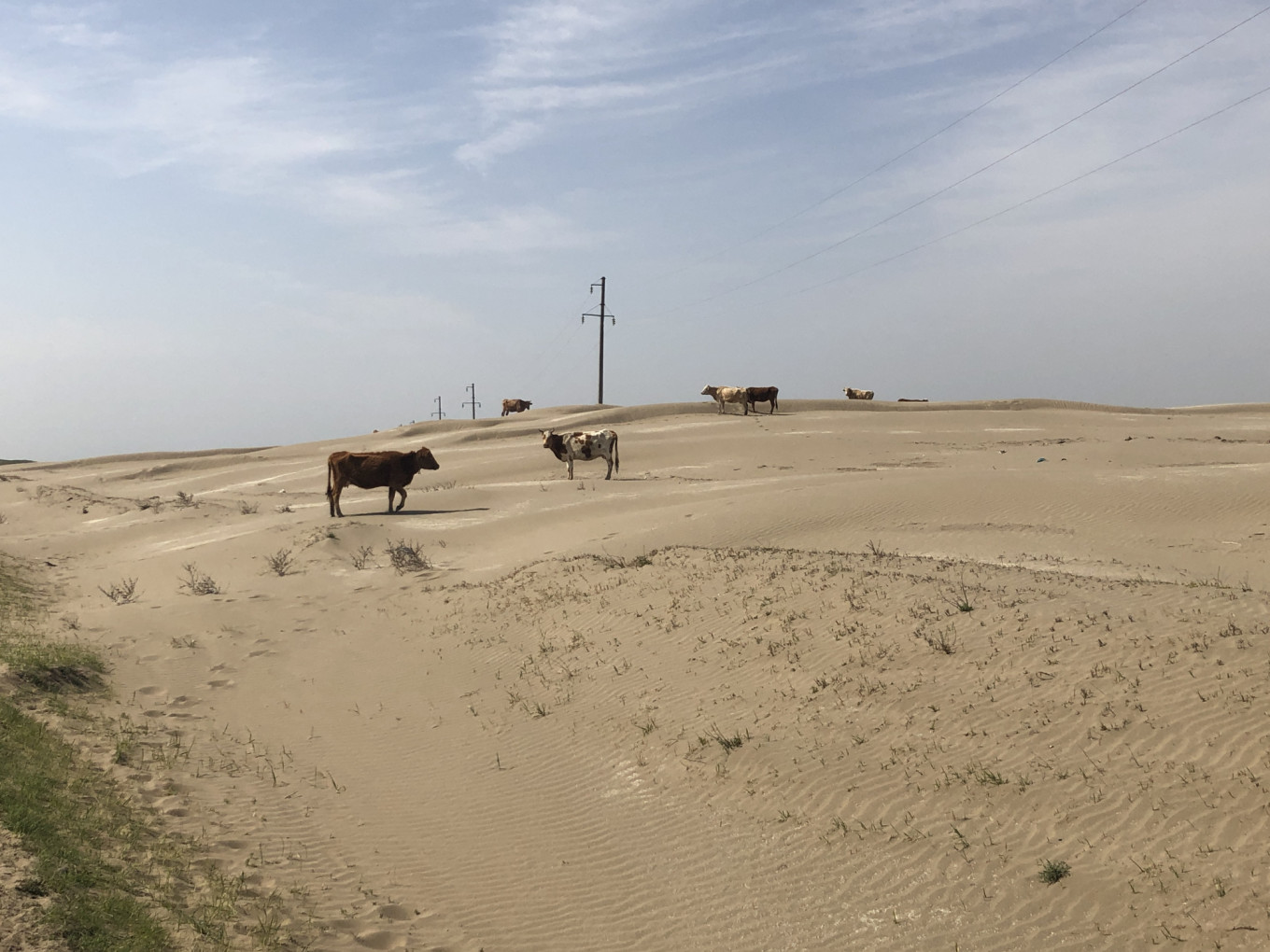
Until recently rich and fertile, the steppes northwest of the Caspian Sea have always attracted eager settlers.
The Nogai — a Turkic-speaking nation descended from the Mongol Golden Horde — are only the latest people to claim this slice of steppe as their own, with their ancestors having settled in the region after leaving Central Asia over a thousand years ago.
Nomads until the 1930s, the Nogai gained a reputation as fierce warriors, ruling the lands between the Caspian and Black seas and fighting Russian expansion southwards.
Today, 100,000 remaining Nogai are dispersed across Russia’s southern steppe, their culture mostly forgotten. Only in Dagestan’s distant northern reaches does their language survive and thrive.
More recently, however, nature has turned on the Nogai in their steppe strongholds.
Sometime in the early 1990s — no one can remember exactly when — the soil beneath the lush grasslands around Terekli-Mekteb, a dusty steppe town of around 6,000 that is the capital of Dagestan’s Nogai district, began to crumble into sand.
By the end of the decade, massive dunes had begun to erupt from beneath the plains. Throughout the 2010s, the salty lakes that had kept the soil watered dried up, leaving behind white-bottomed salt flats that still litter the steppe.
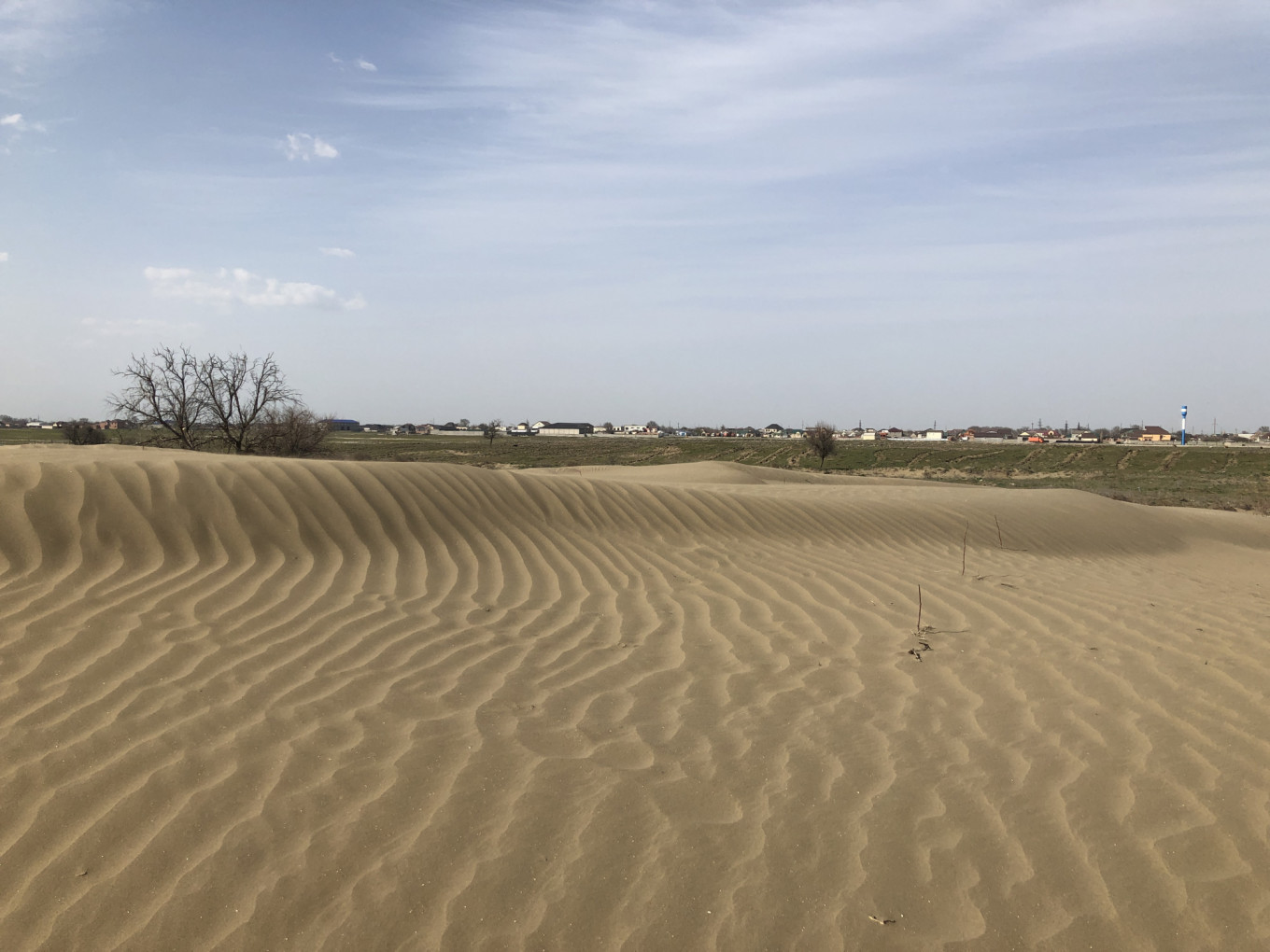
Today, the steppe’s transformation continues apace, as the sands spread further into the grassland, aided by the powerful winds that sweep in from the Caspian Sea.
Though reliable figures for desertification are hard to come by, at least 2000 square kilometers — equivalent to around a quarter of the Nogai district’s entire landmass — are now desert, according to a 2020 report by the Russian government newspaper Rossiyskaya Gazeta.
“One small patch of desert appears suddenly, and it expands very quickly,” said Bakiyev, who in his role at the forestry commission is at the forefront of the Nogais’ fight against desertification.
“You need to stop it as soon as possible.”
Over the last few decades, the Nogai have learnt how to fight the desert. Planting trees can keep the soil watered, preventing the encroaching sand from taking root.
When it does, they plant zhuzgun, a wiry, deep-rooted weed native to Kazakhstan that binds the earth together, preventing the sand dunes from expanding further.
But with every passing year the struggle becomes more one-sided, with the Nogai overpowered by the sheer scale of the transformation taking place.
“The situation is catastrophic,” said Bakiyev. “It’s a disaster for our people.”
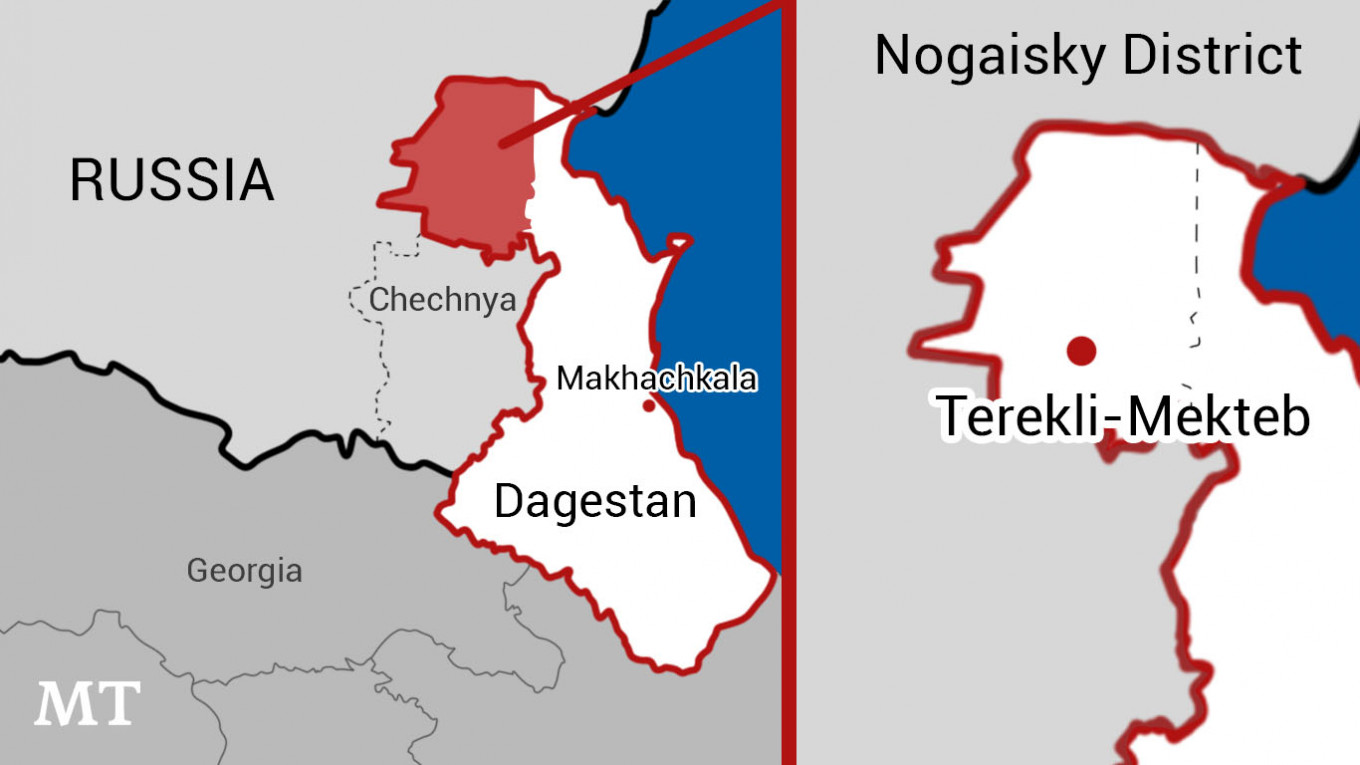
The reason for the Nogais’ plight depends on who you ask.
For most, the clear culprits are their fellow Dagestanis.
Since the end of the Soviet Union and the collapse of controls on internal movement, the Nogais’ rich pastures have been used by farmers from Dagestan’s central mountains to graze their herds.
Overwhelmed by year-round grazing, the steppe’s fragile ecosystem has collapsed under the weight of industrial agriculture, say locals.
“Outsiders have no feel for our land,” said Akhmet Yarlykapov, an anthropologist at the Moscow State Institute of International Relations (MGIMO) and a Terekli-Mekteb native.
“All they care about is turning a quick profit.”
It’s a problem worsened, according to Yarlykapov, by Dagestan’s complex political culture.
An overwhelmingly Muslim region inhabited by over thirty different nationalities, Dagestan has traditionally been run under an intricate system of ethnic power sharing, with the more numerous ethnicities afforded more power and influence in the region’s capital, Makhachkala.
Under this system, the Nogai, who make up only around 1% of Dagestan’s total population, have little chance of securing a solution to the overgrazing issue.
For others, however, desertification is the result of runaway climate change that has seen rainfall dwindle to almost nothing and winters vanish, driven in part by the evaporation of the Caspian Sea.
“When I was a child here, we used to play hockey on frozen rivers,” said Bakiyev.
“But in the eight years since I moved back from Moscow, we haven’t had a single normal winter.”
According to Olga Andreeva, a desertification expert at the Institute of Geography of the Russian Academy of Sciences, the Nogais’ troubles — which are only part of a wider threat to huge swathes of Russia’s dry and agriculture-heavy southern plains — stem from a combination of both factors.
“Desertification is always a complex process, caused by human and climatic factors” she said.
“Often, one can make the other worse.”
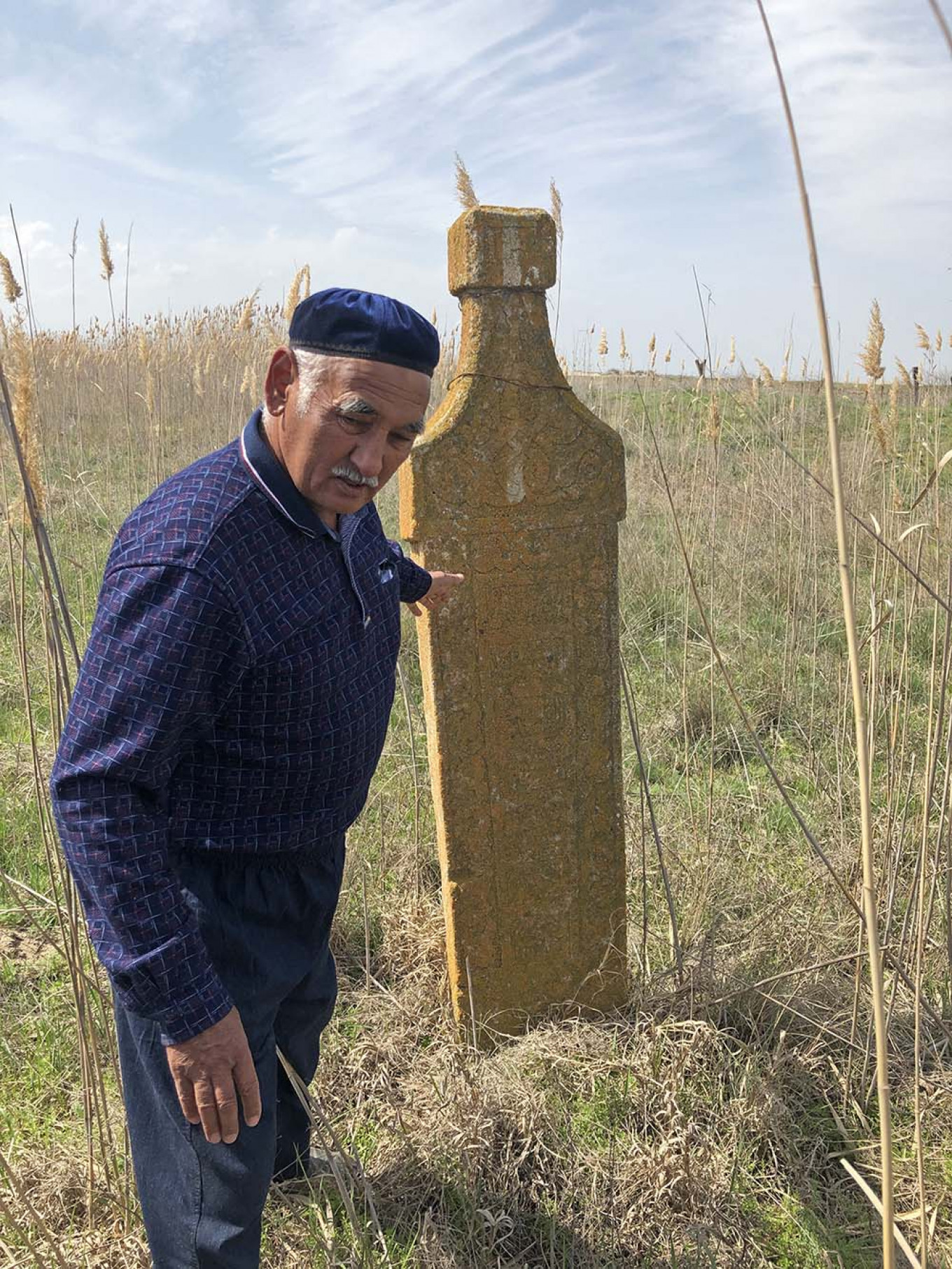
In Terekli-Mekteb at least, the Nogai have fought the desert to a standstill.
Around the town, forests strategically planted during the Soviet period shelter residents from sandstorms, their roots protecting precious groundwater from the desert.
Outside the Nogai capital, however, the situation is much worse.
Thirty kilometers away, in the small hamlet of Kumli near the border with Chechnya, there is neither water nor money for the mass tree-planting that has saved Terekli-Mekteb.
Instead, villagers construct barricades of cow dung around this former collective farm — whose name means “sandy” in the Nogai language — in a vain attempt to stop the dunes that encircle Kumli from drifting into the village.
For the Nogai, isolated villages like Kumli hold a singular value.
For a historically nomadic people who have left little physical trace on the lands they have inhabited for centuries, the Islamic-style gravestones, tall and thin with Arabic inscriptions, that dot the outlying villages are one of the Nogais’ few tangible links to their history.
“Our ancestors never built statues or monuments,” said anthropologist Yarlykapov.
“The graves are all we have.”
For the last decade, Shora Mamurov, Kumli’s village mullah, has thought of little but graves.
When the sands started to consume the plains around Kumli, Mamurov started making records of the local graveyards as they were swallowed up one by one by the advancing dunes.
At home in Kumli, he keeps detailed lists of gravestones — names, dates of death, and inscriptions — lost under the sands. One day, he hopes, they might help recover the buried tombs from beneath the desert.
“For us, the graves are like a second home,” said Mamurov.
“People come here for spiritual renewal.”
In Kumli’s main cemetery — where graves range from eighteenth century religious leaders to victims of the coronavirus pandemic — a steady stream of visitors pay their respects to their ancestors.
Outside the graveyard’s walls, however, the sands are closing in. Last year, the desert came within fifty meters of the cemetery. This year, strong summer winds are expected to bring it even closer.
“You can see for yourself what a disaster this is,” said Mamurov, gesturing at the dunes looming over the graveyard.
“If you come back in the summer, all this will be covered in sand.”
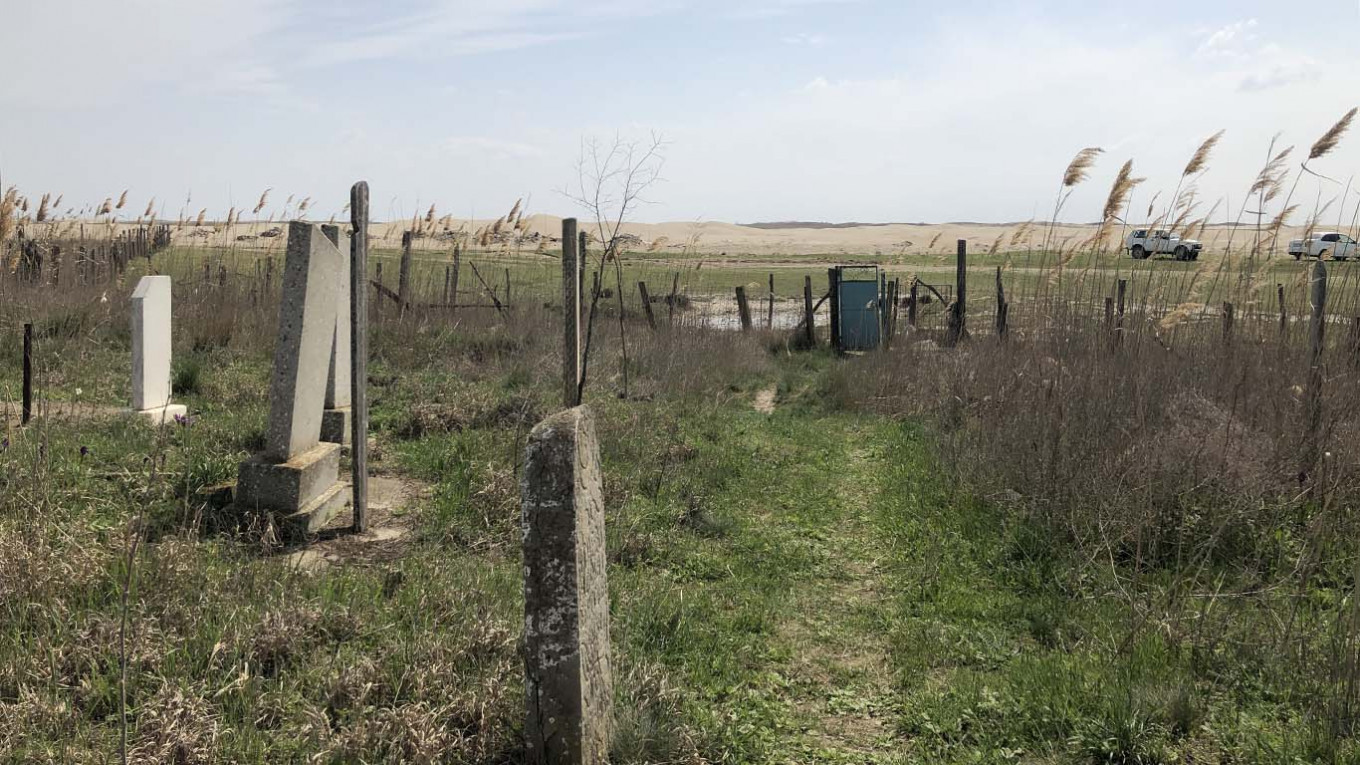
Experts, however, stress that the Nogai lands are not doomed, even as climate change looks set to render this part of Russia ever hotter and more arid.
“Desertification is not inevitable,” said the Russian Academy of Sciences’ Andreeva.
“You need a serious regime to regulate pasture use, and a big program of tree planting to hold back the desert’s spread.”
But out on the steppe — where the supply of fertile land grows smaller each year and the rains show no signs of returning — many Nogai see nothing less than an existential threat to their nation and way of life.
With each passing year more young Nogais, their traditional agricultural livelihoods destroyed by the desert, abandon a depopulating Terekli-Mekteb to seek work in Moscow or distant Siberian oil towns.
“We don’t have factories or anything like that,” said Bakiyev. “People here live on the land.”
“How can we survive when the land is gone?”
A Message from The Moscow Times:
Dear readers,
We are facing unprecedented challenges. Russia's Prosecutor General's Office has designated The Moscow Times as an "undesirable" organization, criminalizing our work and putting our staff at risk of prosecution. This follows our earlier unjust labeling as a "foreign agent."
These actions are direct attempts to silence independent journalism in Russia. The authorities claim our work "discredits the decisions of the Russian leadership." We see things differently: we strive to provide accurate, unbiased reporting on Russia.
We, the journalists of The Moscow Times, refuse to be silenced. But to continue our work, we need your help.
Your support, no matter how small, makes a world of difference. If you can, please support us monthly starting from just $2. It's quick to set up, and every contribution makes a significant impact.
By supporting The Moscow Times, you're defending open, independent journalism in the face of repression. Thank you for standing with us.
Remind me later.



